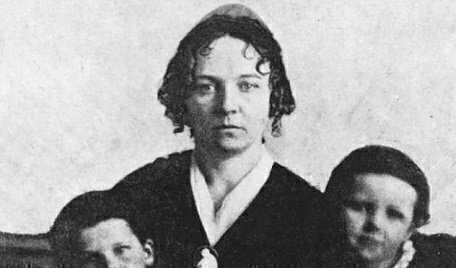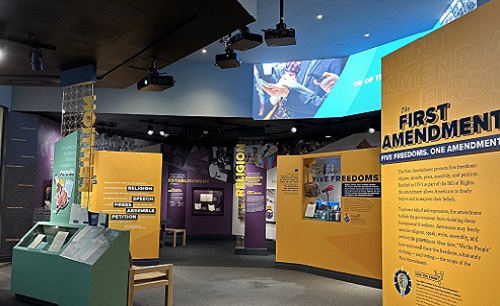The Seneca Falls Convention is regarded by many as the birthplace of American feminism. Heralded as the first women’s rights convention in the United States, it was held at the Wesleyan Chapel in Seneca Falls, New York, on July 19 and 20, 1848.
 At that conference, activist and leader Elizabeth Cady Stanton drafted The Declaration of Sentiments, which called for women’s equality and suffrage. Modeled after the Declaration of Independence and named after the founding document of the American Anti-Slavery Society the document began with “We hold these truths to be self-evident: that all men and women are created equal…” Stanton referenced Jefferson’s principles but explained that they are conditioned solely for men. She further described the unequal, separate spheres women are forced into and called for action. Among the resolutions were the rights to property and education.
At that conference, activist and leader Elizabeth Cady Stanton drafted The Declaration of Sentiments, which called for women’s equality and suffrage. Modeled after the Declaration of Independence and named after the founding document of the American Anti-Slavery Society the document began with “We hold these truths to be self-evident: that all men and women are created equal…” Stanton referenced Jefferson’s principles but explained that they are conditioned solely for men. She further described the unequal, separate spheres women are forced into and called for action. Among the resolutions were the rights to property and education.
On July 20, the Declaration was ratified by the assembly. There was a fight regarding only one resolution: the right to vote. Not all agreed that the vote was imperative and some, including Stanton’s husband, disagreed with the notion entirely. However, Stanton, along with abolitionist Frederick Douglass, argued the necessity of the vote and adopted the resolution. Signed by 68 women and 32 men, including Douglass, the Declaration, and the Seneca Falls Convention remain landmarks in the history of women’s rights.
Stanton’s father was New York State Supreme Court Justice Daniel Cady and she was familiar with legal concepts. She also was inspired by Lucretia Mott, whom she met almost eight years earlier in London at the World Anti-Slavery Convention. There, the two were brought to the women’s only section and were not allowed to sit or speak at the event. This event and the outrage it inspired led to the Seneca Falls Convention in 1848.
Though some scholars debate the historical significance of the convention, Seneca Falls remains a potent symbol of equality.
The now-accepted narrative of Seneca Falls as the beginning of the women’s movement in the United States began after the Civil War, as a form of leverage against the abolitionist movement. Historian Lisa Tetrault explains in her book The Myth of Seneca Falls that at the time of the ratification of the Fourteenth and Fifteenth Amendments, suffragettes such as Stanton and Susan B. Anthony were angered by the idea of the vote going to black men before it went to women. Thus, there was a need to remember how the women’s movement began, and Stanton and Anthony commissioned The History of Women’s Suffrage, a three-volume participant history of the movement.
Beginning in 1873, women began holding anniversary events for the Seneca Falls Convention. With each anniversary, the story became more elaborated and complex, creating a false narrative that the event was more than it seemed. Though the entire convention excluded poor women and black women, among other minorities, it was groundbreaking that women could hold this event at all.
Over 70 years after the convention in Seneca Falls, the nation ratified the 19th Amendment, which granted women the right to vote in 1920. This victory led to the work of prominent feminist leaders in the 1950s and 60s, ushering in a new age and new hope for women’s rights.






